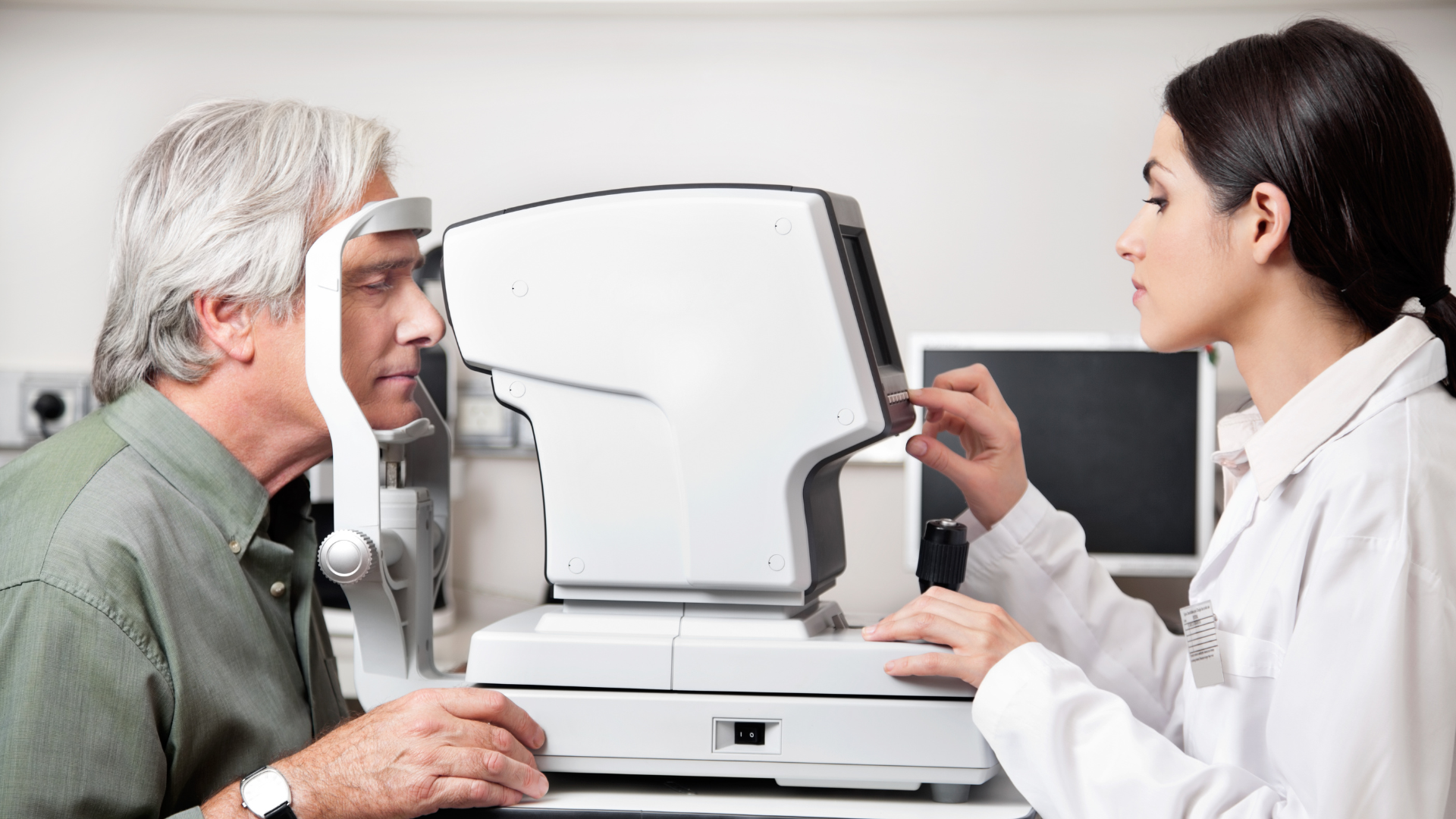
The visual field test - how it can save your sight
Glaucoma is one of the leading causes of sight loss in the UK. RNIB estimates that Approximately 718,000 people are living with the condition. It primarily impacts peripheral vision, the changes can be very subtle which often makes it challenging to notice a difference in your sight during everyday activities.
One important diagnostic test for glaucoma is the visual field test. If you are living with glaucoma or at risk from it, it is likely that you’ll have a visual field test conducted every time you go to your opticians. But do you know how they work and why they’re so important? This article explains how they help to save people’s sight.
What is a visual field test?
A visual field test is a method used to assess your peripheral and overall vision. It enables the detection of any areas of vision loss or blind spots. Additionally, if you have experienced previous vision loss issues, these tests can be used to monitor the progression. The visual field exam is a crucial part of glaucoma diagnosis and is repeated periodically to determine if the condition is stable or getting worse.
Why is a visual field test so important?
It is estimated that up to half of people living with glaucoma aren't aware that they have the condition due to little or no symptoms. People with glaucoma typically lose their peripheral vision but the other eye compensates for this vision loss, meaning patients often don’t notice, which is why regular testing and early diagnosis is so important. One of the few ways to test for peripheral vision loss is through a visual field test.
Crucially, any vision loss can’t be recovered, therefore the earlier it is detected the easier it is to treat and the better chance of preserving your sight.
As well as glaucoma, a visual field test can identify vision loss caused by conditions such as brain tumours, strokes or diabetic retinopathy.
What happens during a visual field test?
An optometrist or a dispensing optician will ensure you’re sitting comfortably in front of the machine. They will address any glasses correction needed by using appropriate lenses and will then explain what you need to do and how the test works.
During the test, one eye will be covered to test each eye individually. Your focus should be on the steady yellow light directly ahead. Subsequently, lights will flash one by one on the sides, and your task is to press the button whenever you perceive these lights. The test is designed in such a way that the lights gradually dim until they are no longer visible, so it is normal to experience longer pauses between flashes. It is important to note that you are not expected to detect every light, and it is possible to see fewer than half of them. If you require a break, you can always pause the test by holding down the response button. Once you release the button, the test will resume.
Throughout the test, the optometrist will ensure that you maintain the right position and continue to look at the lights. If there is any significant movement or shifting of your head, they may gently readjust your position.
It is important to note that the test is designed to be challenging, so try not to feel overly worried during the process. The test typically takes 5 minutes per eye, there is no need to rush as the machine adjusts its timing according to your reaction time and pace.
What constitutes a normal visual field test result?
A normal visual field test indicates that your central and peripheral vision are functioning well. Measurements are typically taken in degrees from the central point across four quadrants known as temporal, nasal, superior, and inferior. A normal visual field test result comprises measurements of 90 degrees temporally, 50 degrees superiorly and nasally, and 60 degrees inferiorly.
What does an abnormal visual field test imply?
If you exhibit a visual field defect suggestive of glaucoma, your optometrist will conduct further investigations to thoroughly evaluate the condition. An abnormal visual field test may indicate early signs of glaucoma, but additional tests are required to confirm this. It's important to note that individuals unfamiliar with visual field tests or those who may not fully comprehend the procedure may find it challenging during their initial attempt.
Occasionally, the optometrist may request a repeat test or additional examinations to determine if a consistent defect is present. Typically, only repeatable field defects raise concerns.
OcuPlan’s core mission is to help end avoidable sight loss. Many people lose their sight because they are unaware of what to look out for and are uninformed on the risks. It is recommended that everyone over the age of 60 should have an eye test every two years and if you have a family history of conditions like glaucoma it should be every year. The only way to check for glaucoma is to have regular eye tests.
OcuPlan provides the gold standard of care for patients with or at risk from glaucoma. We partner with over 500 optician practices all over the UK who all provide visual field tests along with OCT tests for our patients, the results are then analysed by a local consultant ophthalmologist who offers personalised treatment advice.
If you’d like to learn more, please speak to our friendly support team on 0207 173 5200.
About OcuPlan
OcuPlan offers the gold standard of clinical care for patients with long-term eye conditions to help minimise the risk of sight loss.